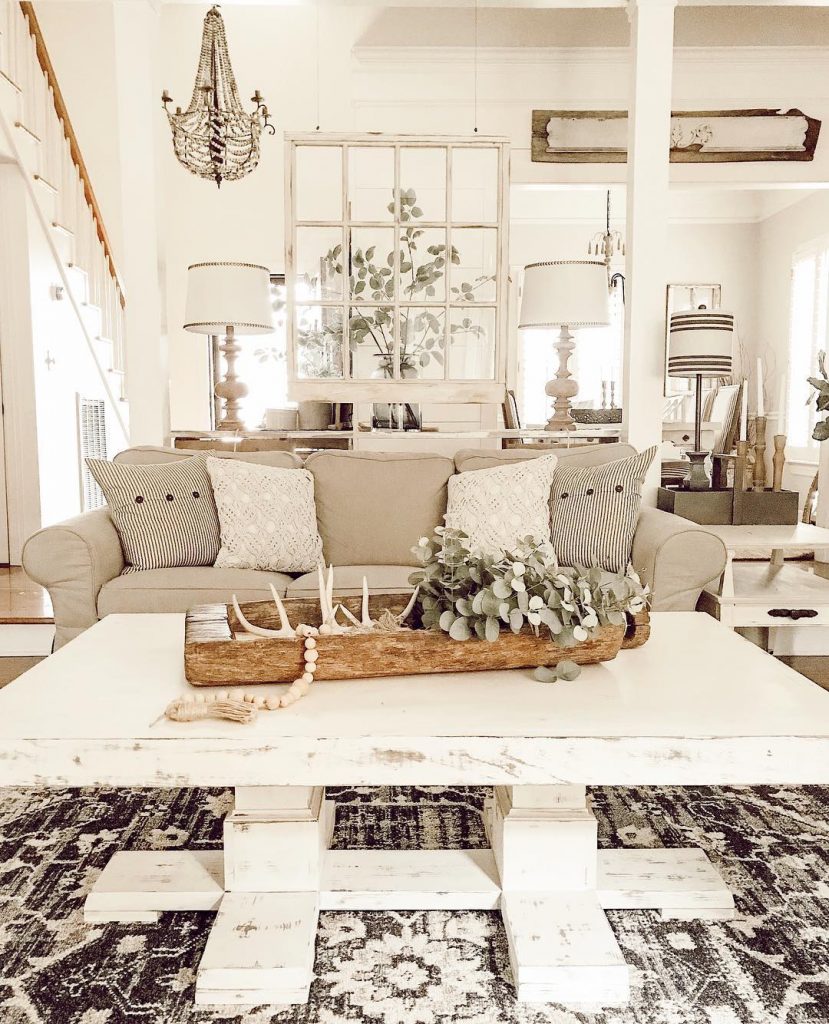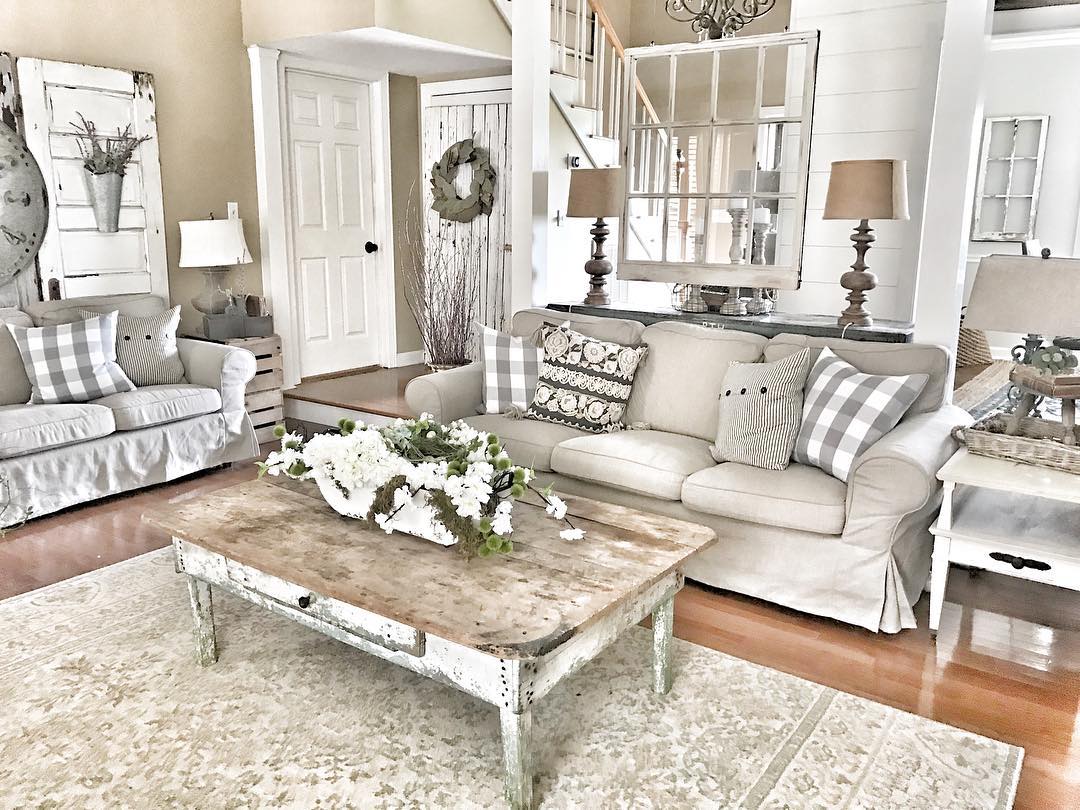Achieving Laid-Back Minimalism With Shabby Chic Style
A shabby chic style is an approach in interior design that focuses on rugged and aged materials and furniture. The purpose of these materials is to arrive in an antique style.
Description: Understanding the Design of Shabby Chic Style
Types of furniture included in shabby chic style builds are mostly re-painted ones. Some of them are refurbished and purposely made to look worn-out.
Accessories that resemble an antique or old appearance may also be included, despite not having the worn-out element. Several techniques are in use to achieve the rusty style, which includes sanding, paint removal, and glazing.
Old silver ceramics and stainless steel accessories are also in use to give out shiny details.
Linens and cotton are also popular picks because of their inspirations, drawing straight back in old times. The cloth, in particular, is being used to emulate the old French linens.
Fabrics are different when it comes to getting their colors. To get the old fabric look, most decorators spill tea to stain them.



The shabby chic style favors the feminine side. Standard pattern style like vintage floral is an example to get that exact feeling. More patterns are applicable that should be inspired by the classic times, including designs from old French and other European country collections.
Ecru is one of the popular colors to infuse in these clothing. Pure white and other pastel colors may also pass the test.
The colors in style aren’t limited to white related ones. Light to neutral colors like several soft variations of blue and also pink is present on several decors.
Rocco-style is a French type interior design principle that is also applicable and exists on finishing touches such as wall design, furniture, and lighting. Old kitchen equipment may also include in the shabby chic style like vintage cupboards and kitchen utensils.
Rose is a pertaining design element in shabby chic, and it applies to almost any furniture and accessories. Several examples include old chandeliers, bed sheets, and pillows. For pillows and bedsheets, the standard fabric clothing is preferable to keep things in uniform.
Although the style is mostly towards women, a masculine type is also available that is inclined to make things look more rugged. Color choices are also the ones separating the two design approaches. The feminine style incorporates bright and more vibrant tones, while the masculine side uses deep and darker tones.
The shabby chic style is popular among interior designers because of Its comforting, romantic, and vintage appearance.
History: A Closer Look to the Design’s Humble Beginnings
Shabby chic’s term came to life in the 20th century. It is mostly used by decorators and fashion designers to describe the style of their works.
Min Hogg is the one responsible for popularizing the term and idea in a magazine named The World of Interiors, which was published back in 1980.
In the 1990s, the design principle gained a large following in the United States, mostly in Los Angeles and San Francisco area. During these times, the design draws inspiration from Mediterranean regions such as Greece, Tuscany, and Provence.
The use of this style can be traced back to Great Britain, where most furniture ideas originate. Sofas, curtains, art pieces are mostly featuring elegant designs. Some of which are even delicately made or constructed for big households back in the days.
Furniture types are refurbished or recycled in the current time to achieve a different take on elegance, making it look old or slightly damaged.
The 1980s saw the rise of shabby chic when merchants, workers, and Bohemians started looking at the elegant furniture of the past as a design idea. The popularity of well-made and luxurious interior design furniture is the main reason for shabby chic’s emergence.
The original concept of shabby chic is very different from what it is today. Some of which are inspired by many decoration styles like Swedish, French, and American.
The original design should be elegant, but as time passes by, modifications are continually coming.
The Elements That Make Modern Shabby Chic Design Possible
Modern influences are now common in shabby chic style. Interior designers are using neutral backgrounds as a foundation. Wall design and paint still retain the idea of shabby chic being simple and white.
For color choices, those that fall under the category of soft pastel colors would do. Painted furniture, however, may have modified or different color patterns, including vivid hues and unusual shades that would go well with shabby chic.
Wood is still a significant element in wall panels, often accented with cream-like and soft pastel colors. The neutral or muted background is essential for showcasing the furniture and accessories that are the highlight of shabby chic style.
Natural materials such as woods and leaves should always be the central concept of chairs and other furniture. For pillows, cotton and linen are still the best options.
Clutter is also an important thing that designers take into consideration, such as pieces of art, personal belongings, and trinkets. These pieces aren’t supposed to overpopulate because shabby chic is all about minimalism.
Floorings and tiles should harmonize with the colors around a room. Clean pastel colors with intricate designs are most favored.
Examples: Outdoor and Indoor Applications of Shabby Chic
Bedrooms are using vibrant and elegant materials, including wood and metal frames. For beddings, the color scheme is still kept and restricted to pure colors, the perfect one being white.



Kitchens retain the material prescribed for a shabby chic style. Chairs and tables are from rustic wood with natural patterns. Tablecloths are possible as long as it is minimalist. Pattern tablecloths are also famous for interior designers.
Offices are work-related, so bigger tables are needed to compensate for this need. Outdoor tables are applicable when building an office that follows the shabby chic design. This type of room is a mixture of different ideas and periods.
The shabby chic design isn’t just limited to an interior room design. Household gardens may also use the same design ideas with little modifications.
Subtle color palettes are perfect for gardens because of its location. Furniture types use woods but with several exceptions, including modern accessories that require metal materials.
Curves are mostly present in shabby chic garden designing. These accents go well with retro furniture.
Throughout the years, more and more people are starting to learn about this design principle. The shabby chic style is popular because of its capability to make minimalism attractive and trendy.

